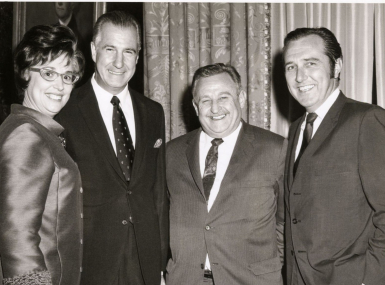Dedicated members drove NACo’s early days
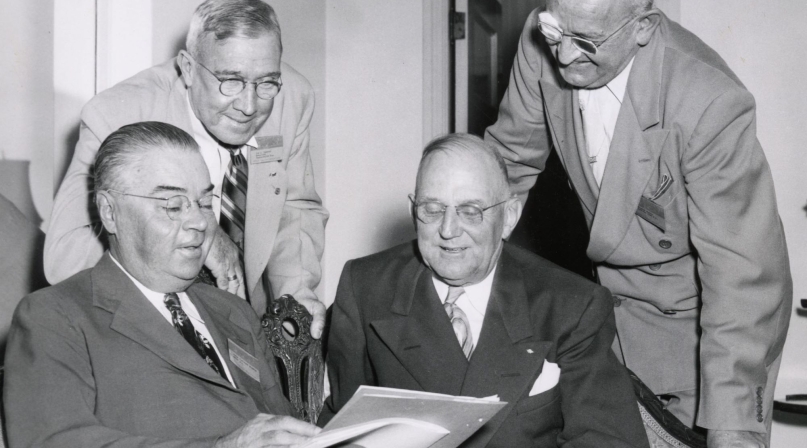
For the first two decades of NACo’s existence, the organization was unrecognizable to the modern county official.
Right down to the name. Founded in 1935 as the National County Officers Association, the organization sought to assert county governments’ place in the intergovernmental system as the federal expansion resulting from New Deal reforms. Counties ran the risk of being pushed out of the way by cities and states, but nationwide, county officers were intent on defending their jurisdictions and contending that they knew best how to manage local government affairs. Counties were catching up to other levels of government that had organized nationally well before, along with state associations of counties that were already at work in their capitals, some for decades.
Past presidents worked part time as agents for the National County Officers Association, and later the National Association of County Officers, but what became NACo saw its member-driven approach to advocacy born out of necessity—the association had no employees. But a stalwart group of officials were dedicated enough to take long train or bus rides to meet annually and guide the association forward.
NACo is marking its 90th anniversary in 2025, starting with the Annual Conference in Philadelphia City and County, Pa. Conference attendees will receive a copy of “National Association of Counties at 90,” a history book chronicling the association’s development and experience a NACo history exhibit in the Great Hall at the Philadelphia Convention Center. Throughout 2025, County News will publish excerpts from NACo’s 90-year history.
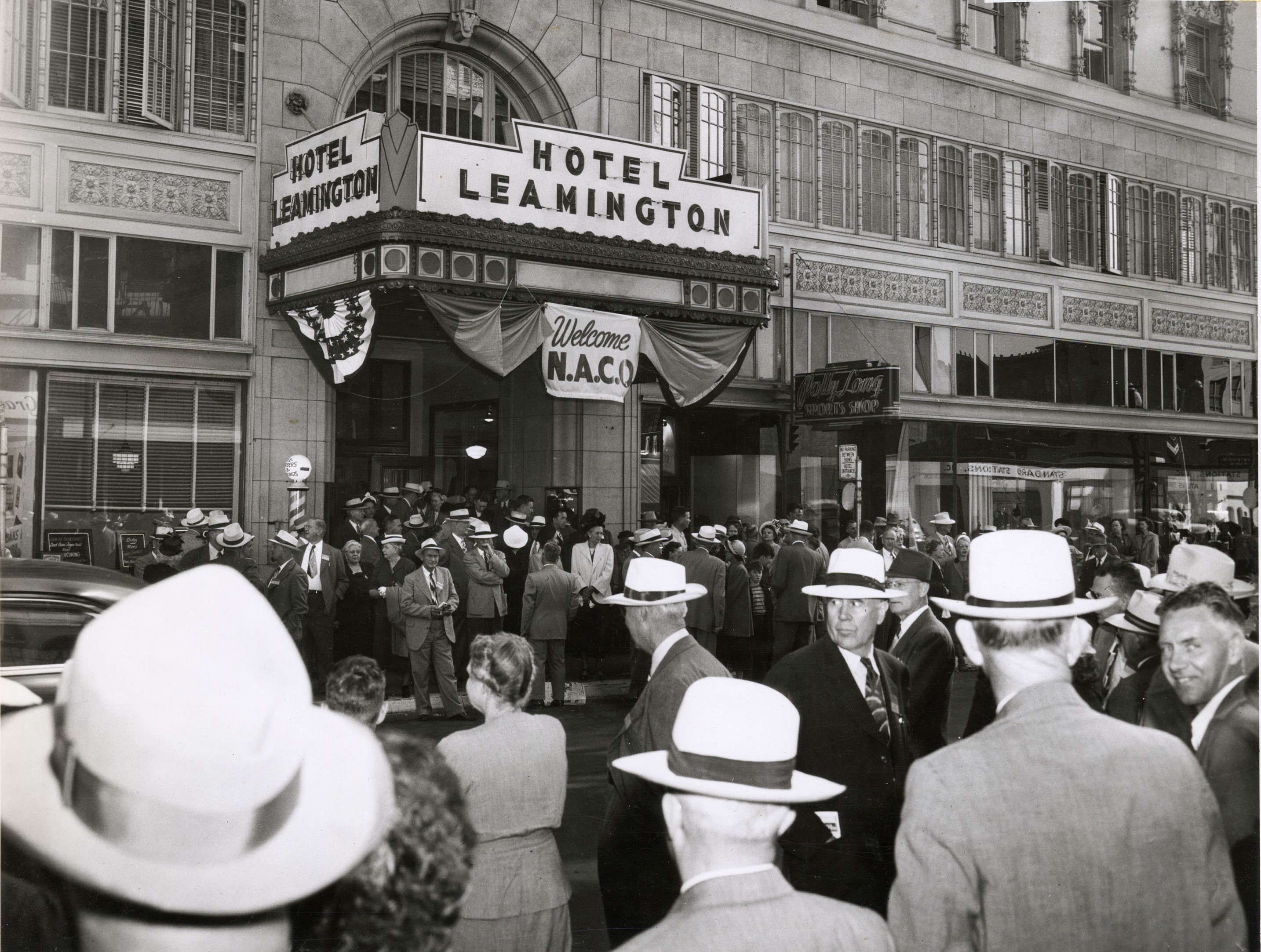
Foreword: Counties Rise
As the United States prepares to celebrate 250 years of independence, America’s county government leaders are marking 90 years of coming together through the National Association of Counties (NACo)—nearly a century of powering the nation from the ground up.
Counties in the United States began with eight shires in colonial Virginia in 1634 and now total 3,069. Our counties, including parishes in Louisiana and boroughs in Alaska, maintain essential transportation and infrastructure, safeguard public safety and justice, and play an essential role in public administration, including elections, that keep our democracy strong. In every corner of the country, we are unique, yet we are all governments in action.
Before the Great Depression, we were largely fragmented. But as the federal government expanded and the demands on local services grew, county leaders knew we needed a unified voice. In 1935, a few pioneering county officials came together to form NACo—to ensure counties had a seat at the table in our evolving intergovernmental system.
Since then, we’ve spoken louder, acted smarter and stood stronger—together. From a laundry room office in the Mayflower Hotel to a lasting presence in the halls of Congress and the White House, we’ve advanced the message that counties are not just implementers—we are innovators. We’ve pushed back on unfunded mandates, fought for our fair share and led through every challenge.
We’ve risen to the moment—again and again. We lent personnel and salvaged resources like gasoline during World War II. We strengthened civil defense during the Cuban Missile Crisis. We delivered critical services through recessions, disasters and terrorist attacks. And when the COVID-19 pandemic hit, our health departments, first responders and local leaders were ready. In the recovery, we’ve been entrusted with the tools to rebuild—and we’ve delivered.
Through NACo, we’ve forged a stronger national voice and a deeper connection to each other. And at our own pivotal crossroads, we reaffirmed that our collective voice matters—and we’re stronger together than apart.
We’ve proven that we not only have the charter to govern, but the will and vision to lead effectively. By strengthening our counties, we strengthen America. Because when counties lead, America thrives.
Counties matter—yesterday, today and for the next 250 years.
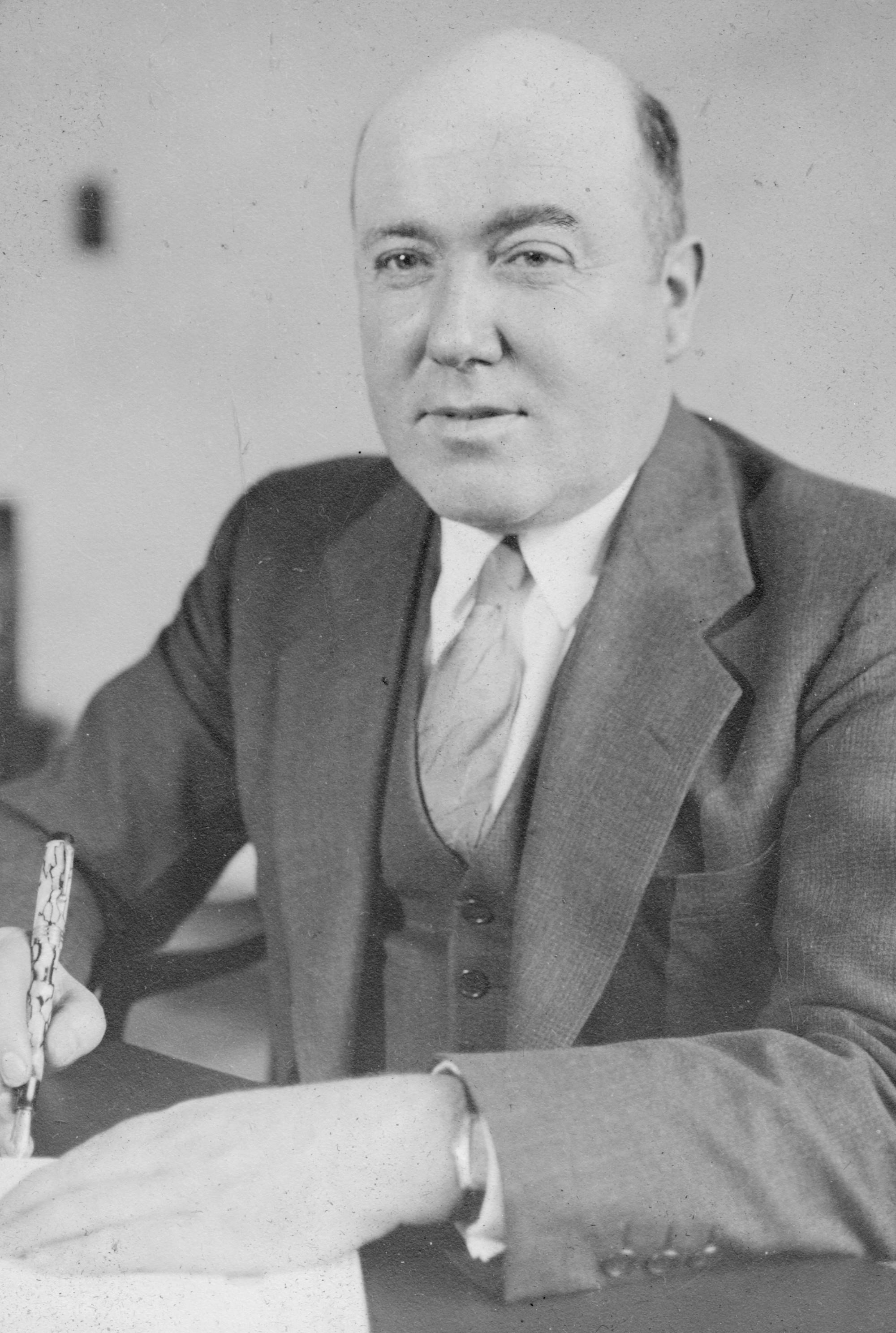
Counties Convene
Counties were under attack.
That’s the attitude Milwaukee County, Wis. Clerk George F. Breitbach took when he invited county officials to a Cook County, Illinois meeting to organize a national group of county officials: the National County Officers Association.
Although counties in several states had already bound together to keep pace with their legislatures and governors, with Nebraska leading the way in 1894, no national organization had served the same purpose for a form of government that predated both state and federal bodies.
The first convention, held Oct. 16-19, 1935, focused on the decentralization of government. The meeting included a speech by Iowa journalist W. F. Parrott, titled “Better County Government.” Salt Lake County, Utah Attorney Harold E. Wallace, serving as vice president, summed the mood up that government should not be turned over to state and national bureaus, owing to county officials’ closer relationship to the people. Wallace noted that several state governments had taken over all road supervision, leaving county officials without a voice in their regulation, construction or maintenance.
Those early years repeated the consistent theme of preserving county authority.
In 1937, the association incorporated in Wisconsin, and the annual meeting in Milwaukee County drew 200 attendees. Attendees adopted a resolution censuring opponents of the county system of government, defending it as most expressive of the liberties of the people and their right to self-government.
County road networks also featured prominently, and attendees heard from Frank R. Wilson, representative of the federal accident prevention conference, who presented results from surveys indicating that speed and youth were the greatest contributors to the 35,000 automobile fatalities every year. Attendees voted for the best orator of the conference, honoring Milwaukee Mayor Daniel Webster Hoan, Jr.
Counties have always, in some regard, had to fight for respect. Contemporary news reports from NACo’s early days were littered with items about county officials attending conferences, but those items referred to the officials’ nearest cities, rather than the counties they served.
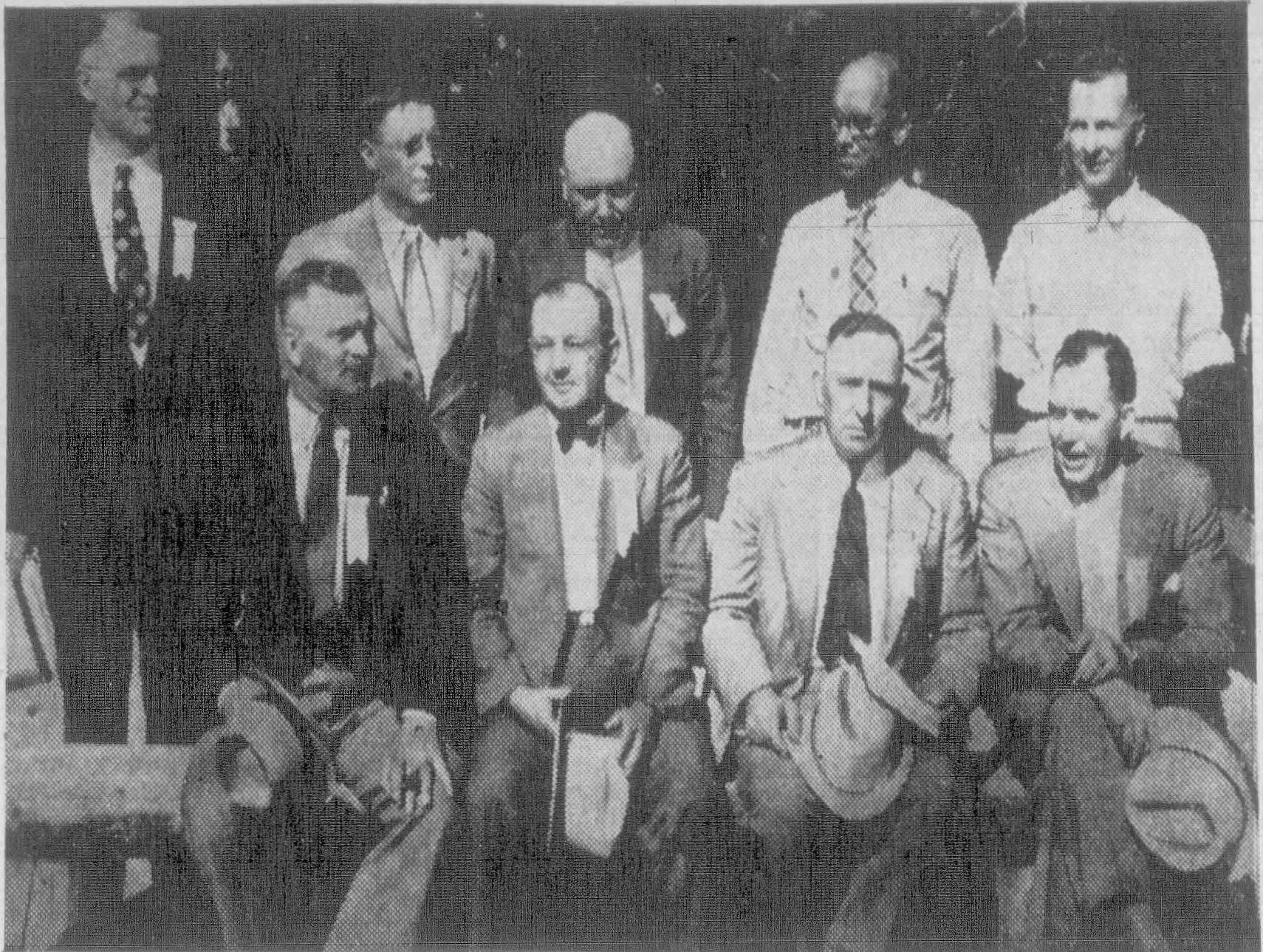
Standing: William A. Smith of Los Angeles County, Calif.; Clarence E. Roy of Allen County, Ind.; George F. Breitbach of Milwaukee County, Wis.; Ed H. Beckett of Pinellas County, Fla. and Patrick H. Dupuis of Bristol County, Mass. Photo courtesy of the Ogden Standard-Examiner
Fueling for the Fight
A funding problem dogged the association because at the time most counties were forbidden from spending public money on association membership or out-of-state travel. A solution rolled off the printing press in the form of The County Officer, published by Allen D. Alberts of Edgar County, Ill. While counties could not spend money on memberships, they could buy newspaper and magazine subscriptions.
The County Officer became the association’s primary fundraising vehicle, yet subscription revenue—$3 per year—only covered production costs. Production opened the door to additional fundraising through state associations of counties. They contributed subscription revenue, editorial material and advertising revenue. Publishing an article won a free membership for the author.
Breitbach’s home state of Wisconsin contributed heavily to the 56-page first edition in April 1937, with articles by Gov. Philip La Follette, who spent two years as Dane County’s district attorney, Secretary of State Theodore Dammann, Dane County Clerk Austin N. Johnson and J.H.H. Alexander, superintendent of recreational publicity for the state conservation department. One article examined county employee pension plans.
Breitbach served as president for three years, until 1938, after which he served as secretary-treasurer and editor of The County Officer.
The association’s 1938 meeting in Rock Island County, Ill. aimed to attract 500 attendees but saw only 60 registrants. The 1938 meeting included an address by Carl H. Chatters, executive director of the Municipal Finance Officers’ Association of the United States and Canada, warning that encroachment by the states was increasingly endangering local revenue sources.
Meanwhile, the federal government was alternating between preserving counties and cities and planning new burdens on them to sap their authority and influence. State laws canceling county-imposed penalties, postponing sales taxes and encouraging tax exemptions were eroding property taxes, which serve as counties’ primary source of revenue to this day.
“The elected officials of local communities and elected officials of states cannot be expected to stand up and cheer at the thought of raising local tax rates or devising new forms of state taxation for relief purposes if that responsibility can be transferred to Washington,” Chatters said.
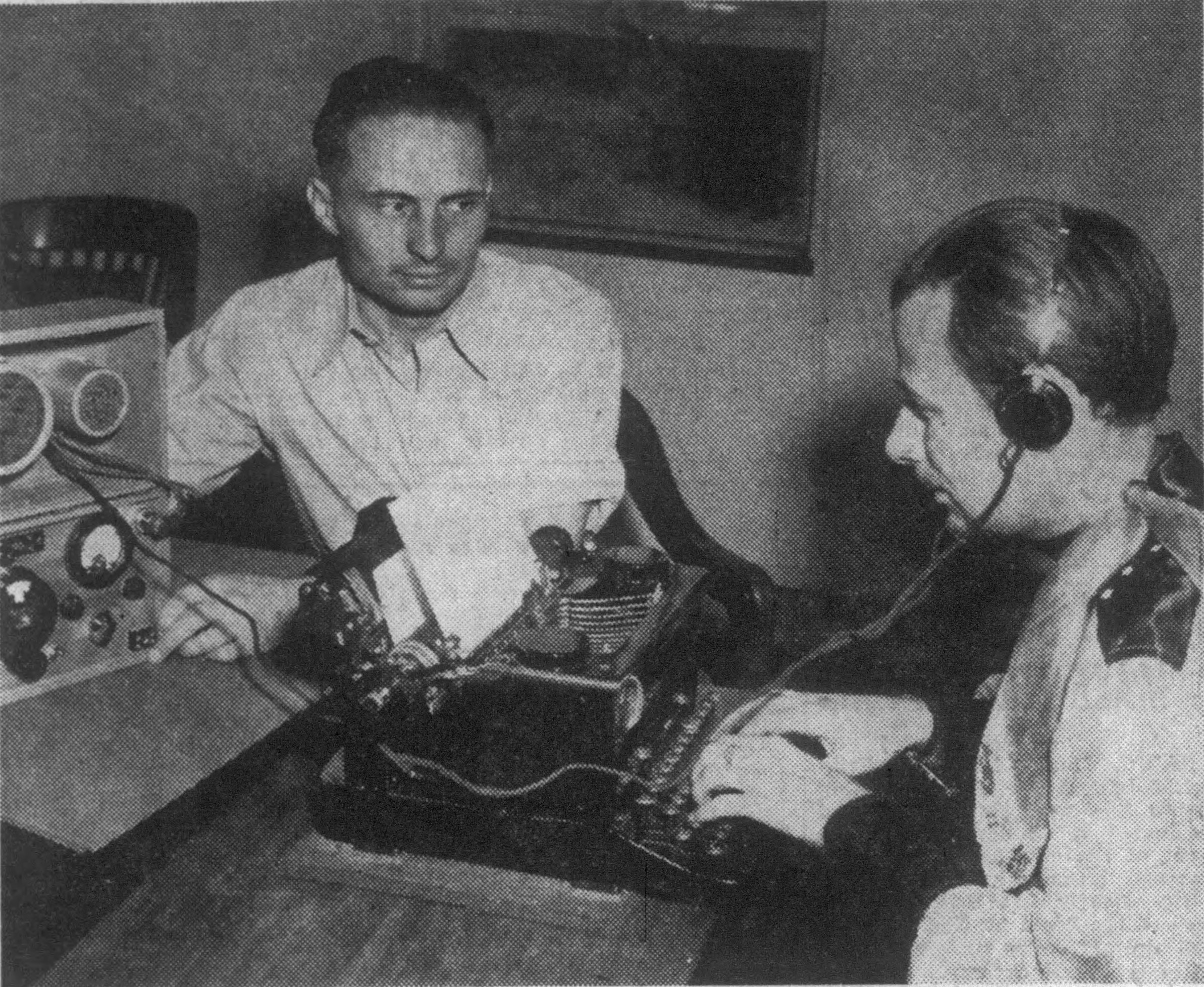
The Surge
The disappointment in 1938 raised the stakes for 1939, setting up that year’s meeting in Weber County, Utah as a make-or-break event in President George F. Simmons’s home county, where he served as chairman of the county commission. Members sent out 25,000 invitations and aimed high, inviting Vice President John Nance Garner and FBI Director J. Edgar Hoover to speak, though neither attended.
“The challenge has been issued to us as a state as to whether or not we can successfully conduct a convention and bring the ‘national’ back to an association. It will be up to us to revive the National County Officers Association,” Simmons said.
Not only did attendance rebound, with more than 500 registrants and $2,500 in revenue, but the renamed National Association of County Officers attacked the new stage in its development with gusto. NACo mobilized that year to combat efforts to consolidate counties, a movement afoot at the time in Missouri.
“The nationwide movement toward the consolidation of counties and the further centralization of government in large units is a distinct threat as well as a challenge to all county officials,” Simmons wrote.
The conference even received media attention from the Ogden Standard-Examiner, which covered proceedings 45 miles away via radiophone.
A new plan hatched in 1939 counted on state associations to sponsor issues of The County Officer. The sponsoring state association pledged to collect the magazine subscription fees for each of the officers of every county in the state and to solicit advertising.
Following his term in office, Simmons traveled throughout the United States, visiting Pueblo County, Colo.; Ford and Sedgwick counties in Kansas; Tarrant, Harris, Bexar and El Paso counties in Texas; Maricopa County, Ariz. and Los Angeles County, Calif. as part of his part-time role, alternately dubbed executive director or executive secretary.
Throughout its first two decades, NACo continued to operate under the same basic conditions. Its members were individual county officers who subscribed to The County Officer. States took turns sponsoring issues of the magazine and generating the advertising revenues that underwrote NACo activities. County officials paid their own ways, often chartering trains or bus caravans to conventions, which focused on networking, problem solving, education and advocacy with counties’ federal delegations. NACo’s message to county leaders: Do more for our constituents.
“No county officer can do his job by staying home or just doing the thing that his predecessor did,” Simmons said in 1941, when membership grew to 1,500 individuals. “We and other county officers have in our hands one of the greatest powers in our nation.”
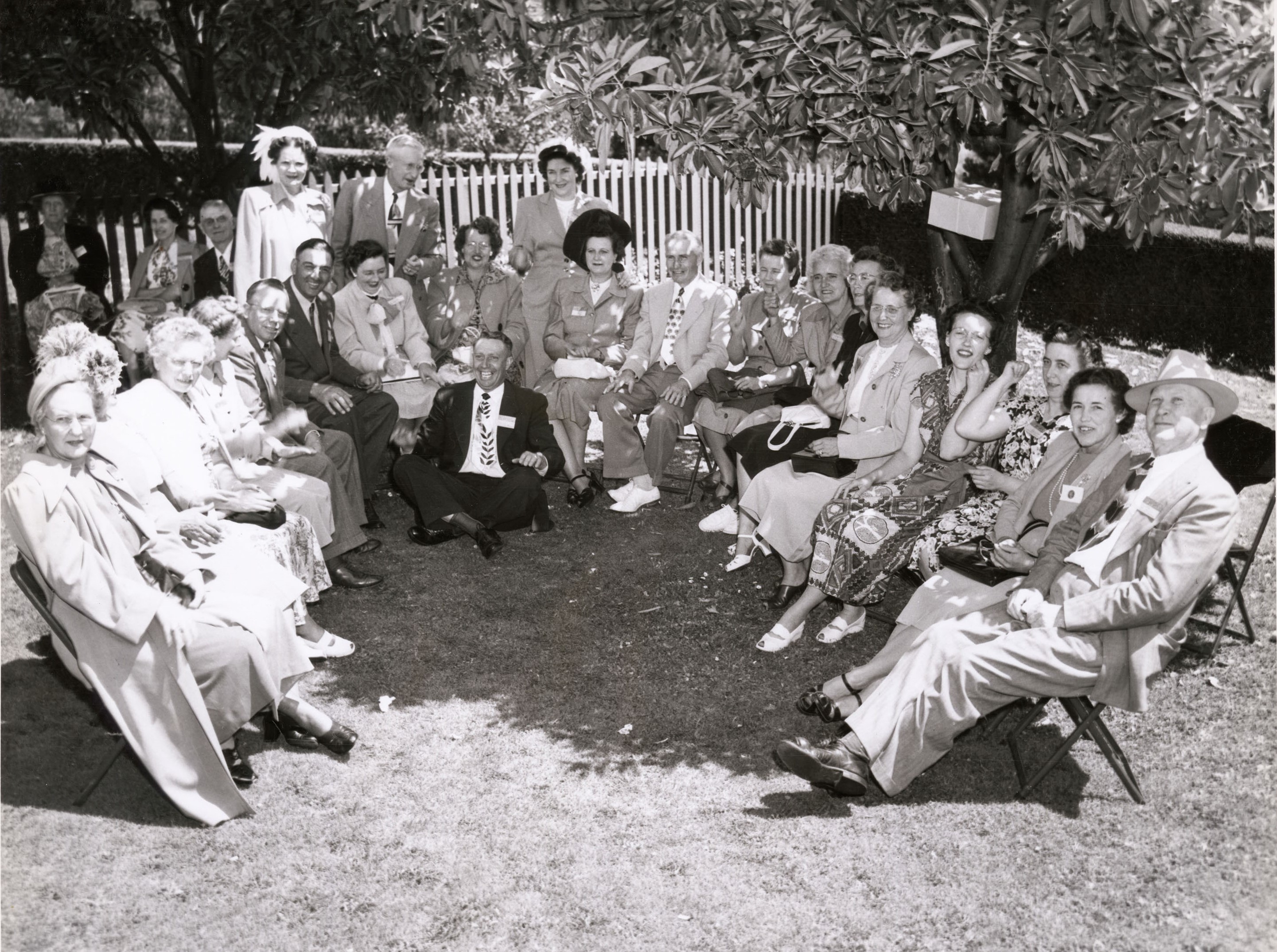
Strengthening the Western Flank
Advocacy gained steam on an issue that has been a throughline in NACo’s operation and a galvanizing issue that drove longstanding loyalty to the organization.
Guy Cordon, a lawyer for the Association of Oregon Counties, spoke to county officials at the annual conference in Louisville about the disparity between the value of tax-exempt federally owned land and the remittances given to the counties by the federal government. The property tax revenue of all of that land in 1941 should total $91 million, while the government instead divided $2.5 million among counties.
The Interstate Association of Public Land Counties formed in 1941 to advocate for a fairer share and later merged with the Western District of NACo to form the Western Interstate Region in 1978. In the 2020s, the Western Interstate Region added Minnesota and Nebraska, recognizing the prevalence of public lands in those states.
“Counties with large proportions of their natural resources held in nontaxable status therefore are at a decided disadvantage so far as obtaining property taxes for their support, compared with counties in older sections of the country where virtually all of the land is under private ownership,” said Edwin J. Regan, chairman of the Interstate Association of Public Land Counties and district attorney for Trinity County, Calif.
Federal land management became a rallying cry for NACo in the early days because it was a direct touchpoint between county and federal governments, though it would be 35 years until the 1976 Payments in Lieu of Taxes program codified how the federal government would compensate counties for lands administered by the Bureau of Land Management, U.S. Forest Service, National Park Service, U.S. Fish and Wildlife Service and some military installations.
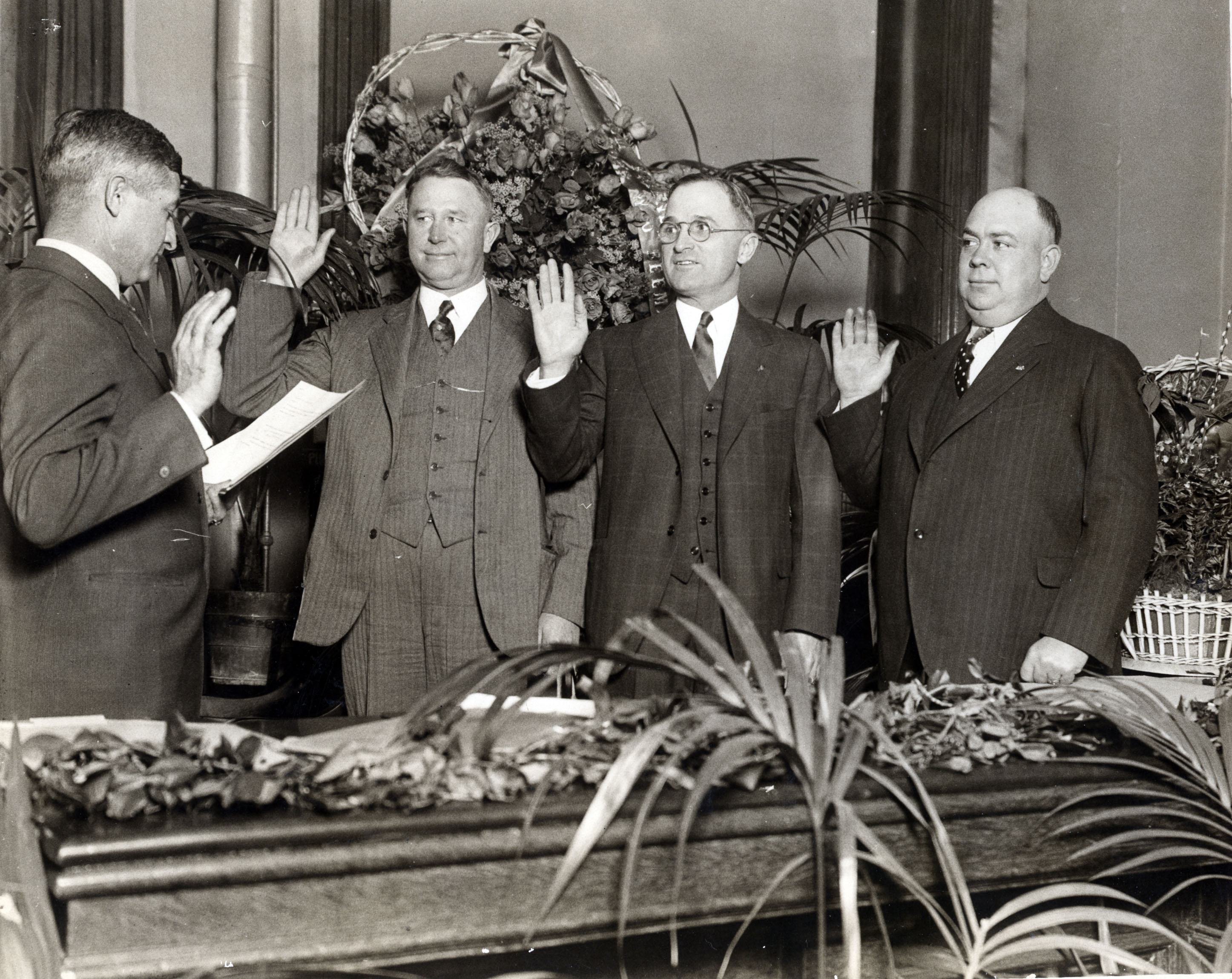
A Nation at War
The next year saw the United States shift to fighting World War II, and counties themselves, besides lending their personnel to the war effort, made temporary repairs to save critical materials.
“I saw firsthand the fine leadership with which counties provided during the dark days of the Depression and the services they rendered during the war,” said Sen. Lister Hill (D-Ala.).
On the eve of World War II, Grayson County, Texas Judge and NACo President Jake Loy in 1939 said, “County officers are the first line of defense. They must be men of courage and action, sympathetic but firm.”
In 1944, NACo leaders decided it was time to establish a Washington office, funded by subscriptions to The County Officer, and that members would make a major push to sign up officials from all counties nationwide as subscribers. NACo hired a Washington law firm in 1944 to be its eyes, ears and voice in the capital. With the war following on the heels of the depression, America’s county officials felt acutely their role as the government unit closest and most connected to the people.
America came out of the war with a new president—Harry S. Truman, who Jackson County, Mo. residents remembered as a county court judge (1923-1925), a role similar to a county commissioner, and later presiding judge (1927-1935), a role that was both administrative and judicial.
In 1946, the association incorporated again, and the first major article said:
“The objects and purposes for which the corporation is formed are to stimulate and contribute to the continuing improvement of county government throughout the United States, including specifically increased efficiency of county government and an even higher standard of public service through the medium of county government.”
By 1956, NACo’s western constituencies were convinced enough of the value of concerted action to form the Council of State Associations. William MacDougall, general manager of the County Supervisors Association of California, was the first chairman of the new group. He and Washington State Association of Counties executive Richard Watts collaborated on a vigorous effort to establish a full-time NACo presence in Washington.
During the mid-year business conference in 1954, personally financed by St. Clair County, Ala. Judge Ward Forman and Calhoun County, Ala. Commissioner Dan Gray, the board debated plans to set an immediate goal for NACo to procure full-time professional staff support and a financial strategy to support that goal. The association had maintained part-time executive directors, often past presidents like George F. Simmons, who continued working in their home counties in places like Utah and Illinois, far from Congress and the heartbeat of the federal government. The Board of Directors also increased the cost of subscriptions to The County Officer by a dollar.
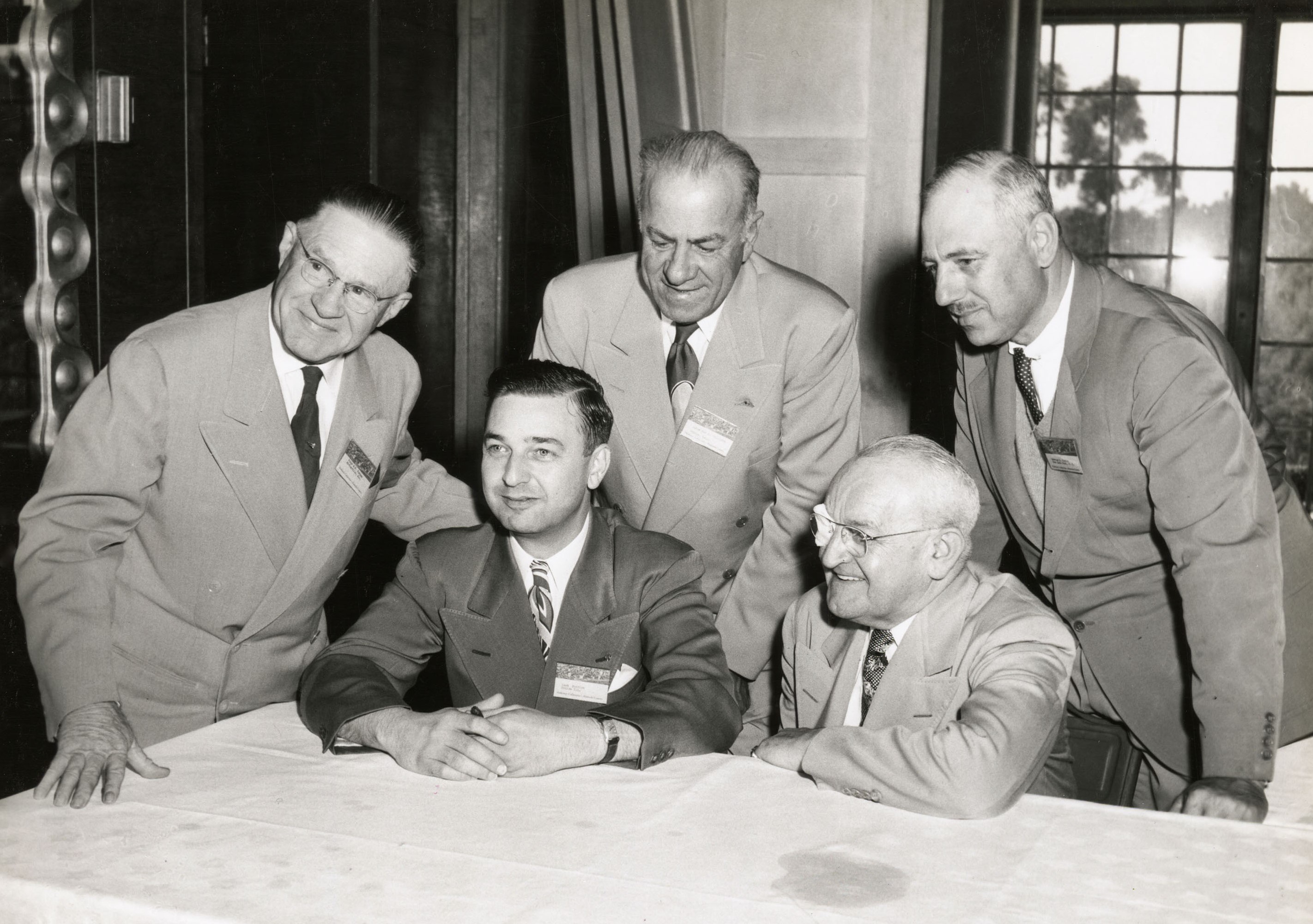
County News
Podcast: NACo at 90 preview
NACo Executive Director Matt Chase interviews County News Podcast Host Charlie Ban about a new book chronicling NACo’s first 90 years.
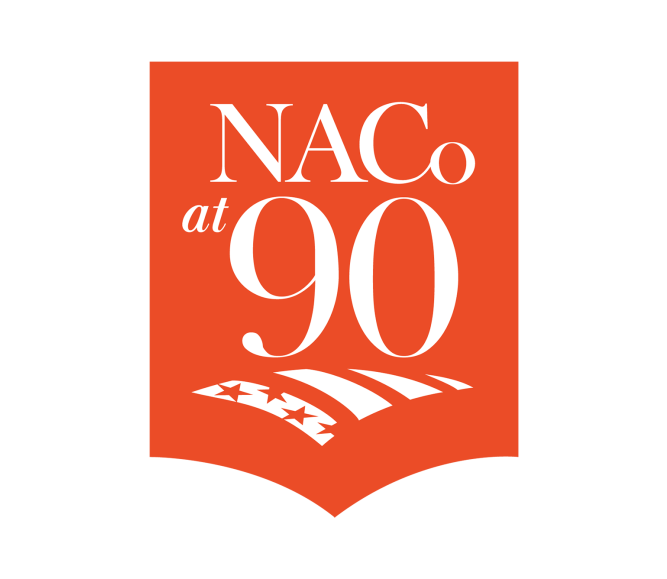
Related News
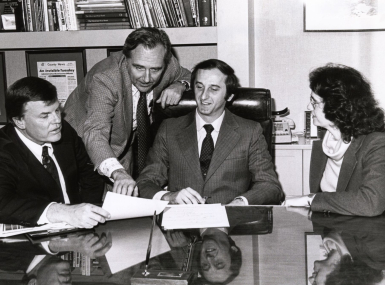
Tumultuous ’80s test NACo’s fundamentals
NACo took two entrepreneurial risks in the 1980s — one nearly bankrupted the organization and the other has gone on to pay dividends for more than 40 years.

NACo Board approves new outreach campaign, new affiliate
NACo will launch a public awareness campaign in 2026 promoting the role of county governments to federal policymakers.

